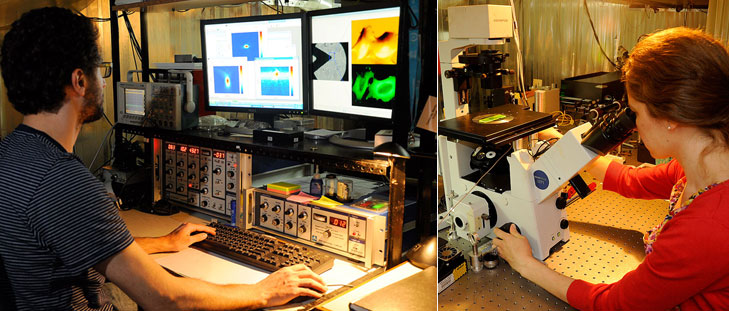Fellowship
Sorry, this entry is only available in Español.

Sorry, this entry is only available in Español.
Sorry, this entry is only available in Español.
Si bien los procesos celulares in vivo ocurren en 3D, la microscopía celular (y el cultivo) han sido utilizados principalmente en 2D por las facilidades técnicas que presenta. Sin embargo, la cuantificación 3D es fundamental para entender procesos en áreas como el desarrollo.
Para entender como surge la respuesta celular en respuesta a estímulos y perturbaciones es necesario cuantificar la movilidad e interacción de moléculas nanométricas. Mas aún, es necesario correlacionar el estado de multiples moléculas.
Tracking of metal NP inside the cell nucleus
Nonlinear excitation of polariton cavity modes in ZnO nanocombs We study the linear and non-linear optical properties of semiconductor nano-micro cavities for applications in nanophotonics.
Selective excitation of nanoparticle vibrations due to plasmon tuning